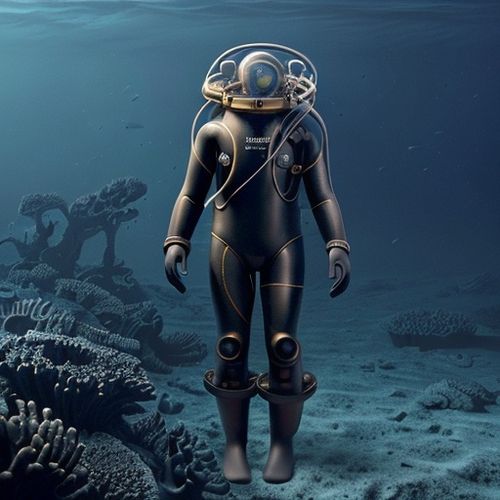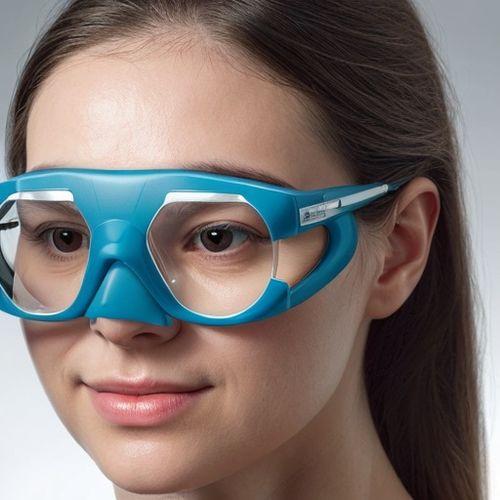The depths of the ocean remain one of the last uncharted frontiers on Earth, a realm where crushing pressures and frigid temperatures create an environment hostile to human life. Yet, as technology advances, so too does our ability to explore these abyssal plains. At the heart of this endeavor lies a critical piece of equipment: the deep-sea diving suit. Designed to withstand pressures that would instantly crush an unprotected human, these suits are marvels of engineering, blending materials science, biomechanics, and cutting-edge design.
The crushing weight of the deep is difficult to comprehend for those who have never ventured below the ocean's surface. For every 10 meters descended, pressure increases by approximately one atmosphere. At 1,000 meters, the pressure is a staggering 100 times greater than at sea level. Traditional scuba gear becomes useless at such depths, and even submarines require specially reinforced hulls. Diving suits intended for these environments must not only protect the wearer but also maintain mobility and life support systems in conditions that would cripple most machinery.
Modern deep-sea diving suits employ a combination of rigid exoskeletons and flexible joints to address the pressure problem. The rigid sections, typically made from advanced composites or titanium alloys, form a protective shell against implosion. These materials are selected for their incredible strength-to-weight ratios and resistance to corrosion in saltwater environments. The joints, often utilizing patented rotary systems, allow movement while maintaining a seal against the external pressure. Engineers have drawn inspiration from arthropod exoskeletons, creating segmented designs that distribute stress evenly across the suit's structure.
Perhaps the most revolutionary development in pressure-resistant diving technology has been the incorporation of atmospheric diving suit (ADS) principles. Unlike traditional suits that require gas mixtures to equalize pressure, ADS systems maintain surface-level pressure internally regardless of depth. This eliminates concerns about decompression sickness and nitrogen narcosis, allowing divers to work at extreme depths for extended periods. The suits achieve this through a combination of mechanical counter-pressure systems and advanced sealing technologies that have been refined over decades of deep-sea exploration and industrial applications.
The human factor presents unique challenges in deep-sea suit design. Even with the suit maintaining internal pressure, the wearer must be able to move and perform delicate tasks in an environment that would otherwise be lethal. This has led to innovations in joint design, including concentric ring systems and lubricated pressure bearings that reduce friction while maintaining seal integrity. Some experimental models even incorporate exoskeletal enhancements that amplify the wearer's strength, necessary when manipulating tools against the tremendous water resistance at depth.
Life support systems in these suits represent another engineering triumph. At depths where surfacing quickly isn't an option, redundant oxygen systems and carbon dioxide scrubbers must operate flawlessly for hours or even days. Modern suits often feature closed-loop rebreathers that recycle exhaled gases, supplemented by emergency bailout systems. Temperature regulation is equally critical, as deep waters hover just above freezing. Electrical heating elements woven into the suit's lining, powered by compact high-capacity batteries, keep the diver functional in what would otherwise be paralyzing cold.
Testing these suits pushes the boundaries of human and technological endurance. Pressure chambers capable of simulating depths exceeding 1,000 meters subject suits to stresses far beyond their rated capacities. These trials reveal weaknesses in materials and design that might not appear under normal operating conditions. The data gathered from such tests has led to incremental improvements in suit architecture, particularly in how different materials interact under extreme compression. Each failure in testing represents a lesson that could save a diver's life in actual deployment.
The future of deep-sea diving technology may lie in biomimicry. Researchers are studying deep-sea creatures like the snailfish, which thrives at depths where the pressure would crush most submarines. These organisms possess unique cellular adaptations that prevent collapse under extreme pressure. While human physiology differs fundamentally from these deep-sea dwellers, understanding their biological strategies could inform new approaches to suit design. Some experimental concepts involve flexible pressure-compensating materials that would eliminate the need for rigid exoskeletons altogether.
As humanity's interests in the deep ocean expand—from scientific research to resource extraction to underwater construction—the demand for more advanced diving suits will only grow. The next generation of suits may incorporate smart materials that adjust their properties based on depth, augmented reality displays that provide real-time environmental data, and even neural interfaces for more intuitive control. What began as primitive diving bells has evolved into technological marvels that serve as personal submarines, allowing humans to walk where the pressure would otherwise render our fragile bodies into paste.
The development of these suits represents more than just technological achievement; it embodies humanity's relentless drive to explore and understand every corner of our planet. Each advancement in deep-sea diving technology opens new possibilities for discovery, whether studying previously inaccessible ecosystems, investigating sunken archaeological sites, or maintaining critical underwater infrastructure. The suits serve as both protective gear and symbolic armor, allowing us to venture into an environment that remains, in many ways, more alien than the surface of Mars.

By Natalie Campbell/Apr 27, 2025

By Emma Thompson/Apr 27, 2025

By George Bailey/Apr 27, 2025

By William Miller/Apr 27, 2025

By James Moore/Apr 27, 2025

By Lily Simpson/Apr 27, 2025

By Elizabeth Taylor/Apr 27, 2025

By Benjamin Evans/Apr 27, 2025

By Elizabeth Taylor/Apr 27, 2025

By Samuel Cooper/Apr 27, 2025

By John Smith/Apr 27, 2025

By Daniel Scott/Apr 27, 2025

By Amanda Phillips/Apr 27, 2025

By Amanda Phillips/Apr 27, 2025

By Elizabeth Taylor/Apr 27, 2025

By Thomas Roberts/Apr 27, 2025

By Victoria Gonzalez/Apr 27, 2025

By David Anderson/Apr 27, 2025

By Emma Thompson/Apr 27, 2025

By Daniel Scott/Apr 27, 2025